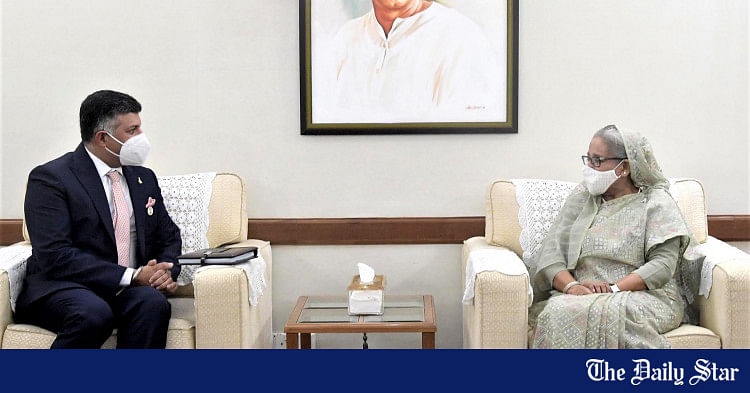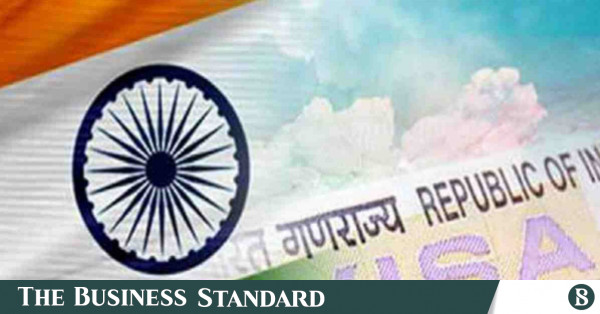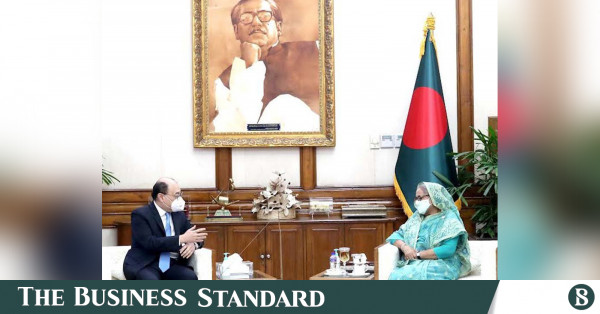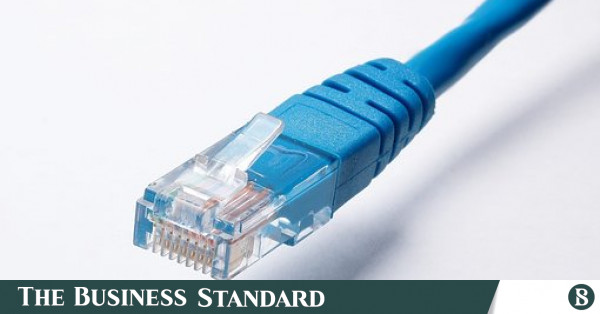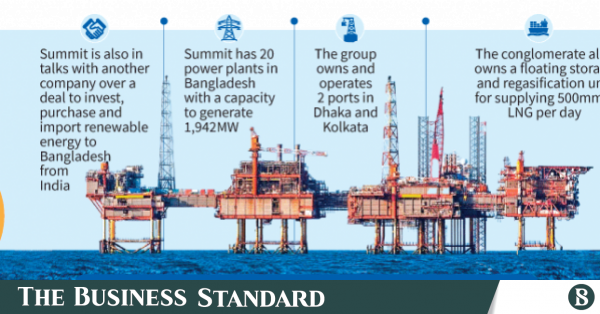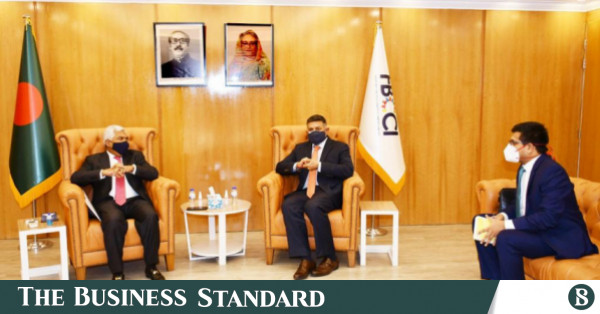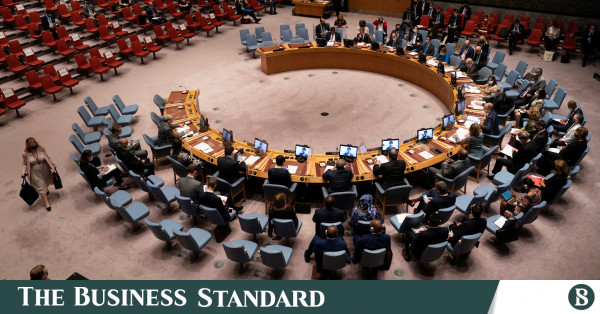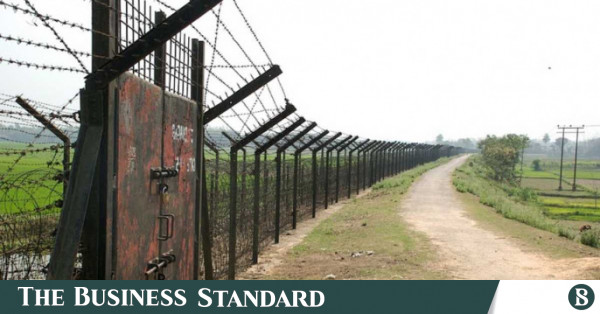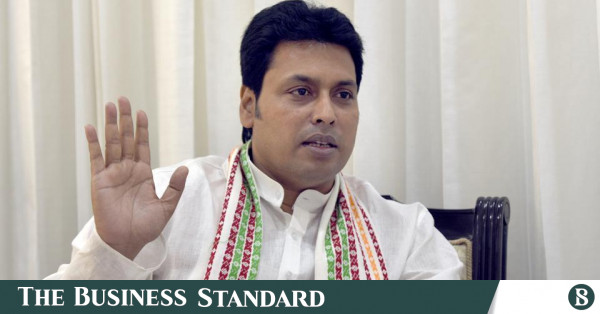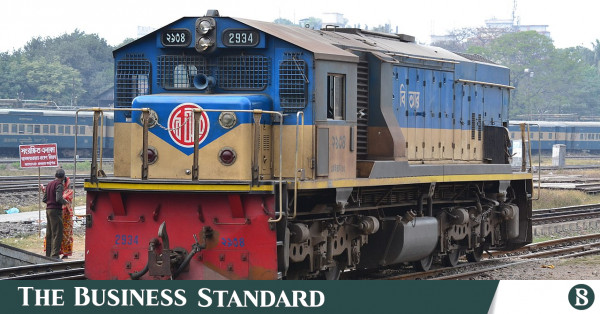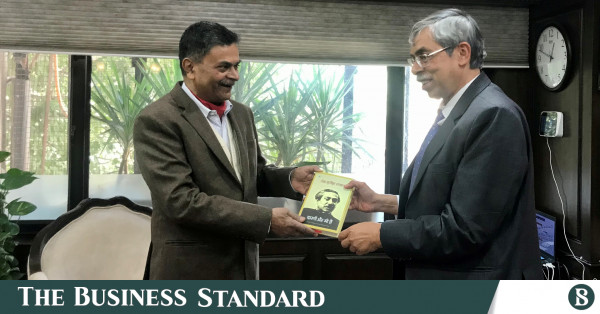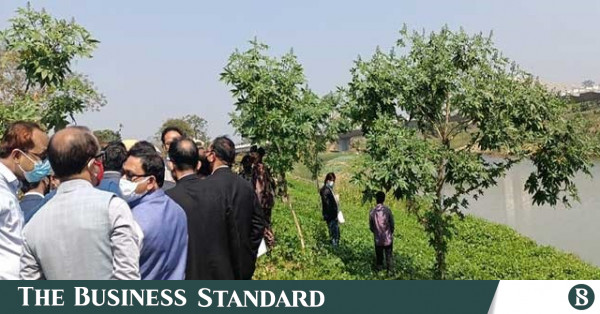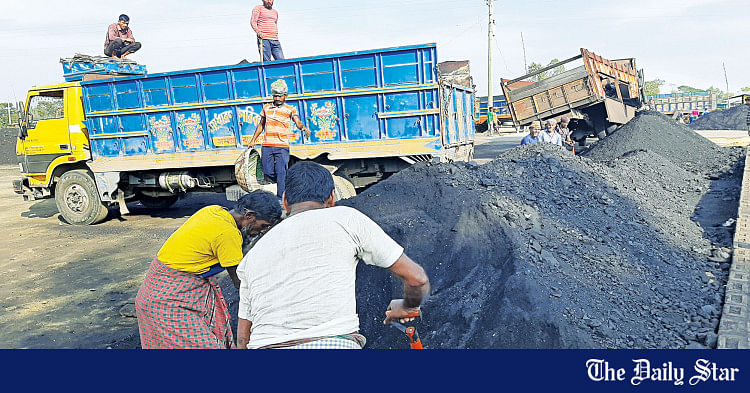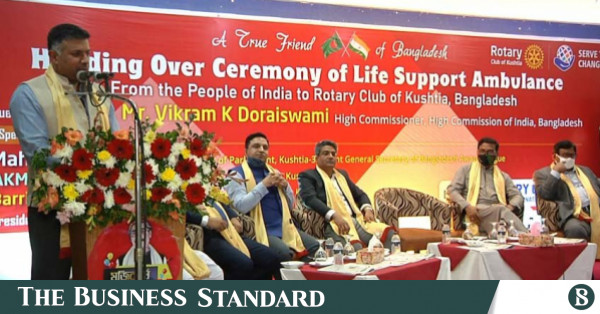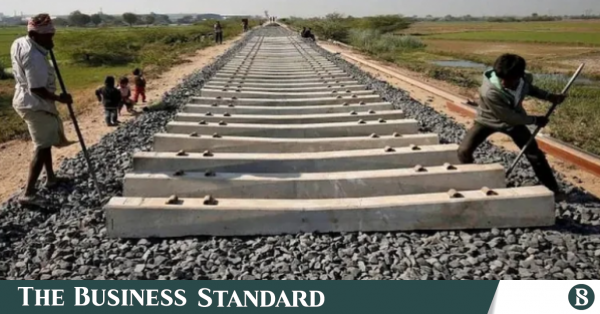The Indian has agreed to fund 80% of the total cost for dredging work in river Meghna on Bangladesh side, Tripura Chief Minister Biplab Kumar Deb has said.
Of the 90-km stretch from Sonamura in Tripura's Sepahijala district to Daudkandi in Bangladesh, around 40-km river bed is needed to be dredged in order to increase the water level. Once complete, it will operationalise the Indo-Bangla waterway connecting river Gomati,
reports the Economic Times.
"The Central government is ready to bear 80% of total cost for dredging work on the Bangladesh side while the remaining part will have to be incurred by the host country", Biplab Kumar Deb told reporters after meeting with India's Ports, Shipping and Waterways Minister Sarbananda Sonawal on Tuesday (15 February).
India's Ministry of Ports, Shipping and Waterways will undertake a hydrographic survey in two more rivers - Howrah and Deo, CM Deb said.
Of the 90-km stretch from Sonamura in Tripura's Sepahijala district to Daudkandi in Bangladesh, around 40-km river bed is needed to be dredged in order to increase the water level

www.tbsnews.net
India is ready to supply locomotives and passenger carriages and transfer technology for railway signalling systems to Bangladesh as part of ongoing cooperation between the two sides to improve connectivity.
The matter figured when Bangladesh high commissioner Muhammad Imran met railways minister Ashwini Vaishnaw on Tuesday and discussed various issues related to the railways sector, including the development of infrastructure and improvement of capacity of Bangladesh Railways.
Imran also briefed the minister about the upgrade of the Dhaka-Chattogram railway link, especially the Akhaura-Laksam section, and sought India's support in this regard, according to a statement from the Bangladesh high commission.
The Indian side expressed its readiness to "supply locomotives, diesel-electric multiple units (DEMU) train, mainline-electric multiple unit (MEMU) train as well as passenger carriages and transfer of technology for railway signalling system to Bangladesh", the statement said.
The Bangladeshi envoy also met minister Raj Kumar Singh and discussed various aspects of bilateral cooperation in the power and new and renewable energy sector.
Imran sought the Indian minister's support for trilateral cooperation in hydropower energy among Bangladesh, Bhutan and India. They also discussed the commissioning of the Maitree super thermal power project at Rampal and trans-national power connectivity.
The Maitree project is a 1,320-MW coal-fired power station being built at Rampal by the Bangladesh India Friendship Power Company (BIFPCL), a 50-50 joint venture between India's state-run National Thermal Power Corporation (NTPC) and Bangladesh Power Development Board (BPDB). The construction of the plant began in 2017 and it is set to be commissioned this year. It will be one of the largest coal-fired power plants in Bangladesh.
In August last year, India and Bangladesh resumed the operation of freight trains on the restored Haldibari-Chilahati route, giving a boost to rail connectivity between the two sides. The route was snapped during the war between India and Pakistan in 1965, when Bangladesh was East Pakistan.
India and Bangladesh are currently working to restore seven rail links that were operational till 1965, and five have already been made operational. India provided 10 diesel locomotives to Bangladesh as grant assistance in 2020.
The Bangladeshi envoy also met minister Raj Kumar Singh and sought the Indian minister’s support for trilateral cooperation in hydropower energy among Bangladesh, Bhutan and India

www.tbsnews.net
Bangladesh has sought Indian support regarding trilateral cooperation in hydropower among Bangladesh, Bhutan and India.
Bangladesh High Commissioner to India Muhammad Imran on Tuesday met Indian Minister of Power and New and Renewable Energy Raj Kumar Singh at the latter's office and discussed the issue.
They also discussed various aspects of bilateral cooperation in the power, new and renewable energy sector between Bangladesh and India, during the meeting.
The two sides discussed the commissioning of the Maitree Super Thermal Power Project at Rampal and transnational power connectivity, according to Bangladesh High Commission in New Delhi.
Earlier, the high commissioner met Minister for Railways, Communications and Electronics and Information Technology of India Ashwini Vaishnaw at the latter's office on Monday.
They discussed various bilateral issues related to the railway sector, including the development of railway infrastructure and improvement of the capacity of Bangladesh Railways (BR).
The high commissioner briefed the minister about the status of the upgradation of Dhaka-Chattogram railway tracks, especially Akhaura-Laksamsector and sought the latter's support in this regard.
The Indian side expressed their readiness to supply locomotives, Diesel Electric Multiple Unit (DEMU) train, Mainline Electric Multiple Unit (MEMU) train as well as passenger carriages and transfer of technology for railway signalling system to Bangladesh.
The respective Secretaries of the ministries and other high officials were present during the meetings.
Deputy High Commissioner of Bangladesh Md Nural Islam also attended the meetings.
Bangladesh has sought Indian support regarding trilateral cooperation in hydropower among Bangladesh, Bhutan and India. Bangladesh High Commissioner to India Muhammad Imran on Tuesday met Indian Minister of Power and New and Renewable Energy Raj Kumar Singh at the latter's office and discussed...

www.tbsnews.net
Indian authorities on Tuesday flagged off the maiden voyage of steel cargo-laden barge from Syama Prasad Mookerjee Port in West Bengal's Haldia to Pandu Port in Guwahati through the Indo-Bangladesh Protocol Route (IBPR).
The maiden voyage – a consignment of 1,798 tonnes of finished steel products by Tata Steel Ltd in Jamshedpur, India – showcases the multi-modal movement of cargo along with harnessing of the power of river-sea combination, as per an official release issued on Wednesday.
The two vessels, named DB ABDUL KALAM and DB KALPANA CHAWLA, are carrying some 900 tonnes of steel each.
After unloading the consignment at Assam's Pandu Port, the barges will return with industrial coal cargo for Kolkata Dock System (KDS).
The barges will move along the neighbouring country's National Waterway 1 (River Ganga) onto IBPR and finally on National Waterway 2 (River Brahmaputra).
Minister of State for Ports, Shipping and Waterways, Shantanu Thakur, and Union Minister for Ports, Shipping and Waterways Sarbananda Sonowal also attended the event.
Speaking at the occasion, Sonowal said, "Under PM Gati Shakti (India's national master plan for multi-modal connectivity) the government has envisaged an integrated approach towards communication that is efficient, economical and environment friendly.
"A synergy between inland waterways and ports is being worked out to serve as a multi-modal logistic hub for handling major domestic cargo."
Indian authorities on Tuesday flagged off the maiden voyage of steel cargo-laden barge from Syama Prasad Mookerjee Port in West Bengal's Haldia to Pandu Port in Guwahati through the Indo-Bangladesh Protocol Route (IBPR). The maiden voyage – a consignment of 1,798 tonnes of finished steel...

www.tbsnews.net
Forrest Cookson
February 16, 2022 12:35 AM
It is obvious that being next to a huge country such as India has important consequences for Bangladesh. In 2022, these relations will be challenged as never before. Relations with India are at many levels: Economic, military, cultural, religious, and financial. The policy of the government is certainly to maintain good relations with India, but not follow India’s demands.
India, on the other hand, recognizes that a friendly relationship with Bangladesh is very important. However, India wants to closely control every aspect of Bangladesh’s government that touches on India interests, which in India’s eyes, is virtually everything.
India runs a very large trade and current account surplus with Bangladesh: In 2020/21 Bangladesh had a current account deficit with India of $8.8 billion. This was largely made up by the trade deficit of $8.3bn (exports from Bangladesh were $1.3bn and imports to Bangladesh were $9.5bn). The official estimates are wrong in four respects:
(1) There is a large amount of under-invoicing of imports. That is, the stated value of the import is less than the true value; the importer uses the
hundi system to pay the foreign exporter the difference. For India, more than 50% of invoices were found to be undervalued. We estimate this under-invoicing as $3bn
(2) The balance of payments does not reflect the remittances of Indian workers in Bangladesh that flow through the
hundi system. We estimate these at $1.4bn. This is lower than many reported estimates but is based on information from people in the industry
(3) Bangladeshi visitors to India for all purposes (education, medical treatment, tourism) account for $1.5bn for the 2.6 million Bangladeshi visitors to India in 2020/21
(4) Informal trade which is a net $3bn
A more accurate estimate for the current account deficit for India is about $17.7bn. The inflow of capital to Bangladesh from India in 2020/21 was $1.4bn (Most of these numbers are from the Bangladesh Bank’s report on the balance of payments with India for 2020/21). The Indian economy benefits tremendously from this current account deficit. Equally, this reduces the Bangladesh economy by about $14.1bn. The return capital inflow is only $1.4bn.
India has put many barriers to reduce Bangladesh exports. It is a ruthless exploitation of the Bangladesh economy. One would hope that the Bangladesh government in 2022 would insist on corrective arrangements: Lowering the barriers to exports or put countervailing duties in place to lower Indian imports. Second, to prevent Indian companies from under-invoicing exports to Bangladesh. The impact of this is to reduce border taxes collected by Bangladesh; these uncollected revenues amount to about $1bn.
The Indian workers’ illegal transfers through the
hundi system should be stopped, these amounts taxed as income, and then made to pass through the formal banking system. The BGMEA has a key role to play here. Since BGMEA is asking a lot of help from the government, it is fair to insist that the payment of foreign workers gets under control.
The Reserve Bank is aware of these flows but does nothing to stop this illegal activity. The other components cannot be controlled. However, the informal trade in cattle can surely be formalized. The data presented here indicates that the informal markets equals the official current account deficit.
The foreign assistance that is offered by India to Bangladesh is limited. Project implementation is slow. There is one large coal-fired power plant soon to come into operation that will make an important contribution to Bangladesh generating power capacity. There are various contributions to the railway, which ultimately probably benefit largely the Indian exporter to Bangladesh.
None of these is likely to make a positive contribution to the economy (that is, a positive return on capital). The foreign assistance is then a show, not a serious investment.
Here is a test: Would the World Bank be willing to finance any of these projects?
Military relations between the two countries seem good and the Indian armed forces are certainly trying to make positive contributions to the Bangladesh military establishment. 2022 should see a deepening of these relationships. Of course India is anxious to improve its relationship with the Bangladesh military.
Some points are very sore: The Chinese supply of submarines and more seriously, the construction of a naval base to house the submarines.
The most serious issue in 2022 will be the Indian treatment of Muslims in India, and in particular, accusations and listings of large numbers of Muslims who -- it is claimed -- have immigrated from Bangladesh. These issues may become more inflamed in 2022 depending largely on the political developments in India. While the Indian government is certainly supportive of Bangladesh, many Indian politicians have little concern for the impact of their policies.
India’s move to establish a Hindu state while making Muslims second-class citizens is a dangerous development for Bangladesh. Encouraging the Hindu state and casting aside the secular state that the great Jawaharlal Nehru established forces three things on South Asia:
(1) The continuation of the caste system with its cruelty and exploitation of the weak
(2) The inevitable rising tension between the Muslims and the Hindus. There are warnings of genocide as the ultimate intent of the BJP
(3) The real catastrophe in South Asia is the deep anger -- even hatred -- between Pakistan and India and each armed with nuclear weapons. Bangladeshis should live in terror of what these two groups -- Pakistani Muslims and Indian Hindus -- are willing to do to each other. Chances of nuclear war in South Asia are rising day by day
Bangladesh should join with China and the United States to lower this nuclear arms race. There are many actions that Prime Minister Sheikh Hasina can initiate to lower the threat of nuclear war:
(1) More open trade relations between India and Bangladesh would benefit both sides and generate common business interests. India FDI levels are pathetic for a country of such size. Open trade would probably raise FDI. The hidden, informal trade and investment should come out into the open
(2) Bangladesh must take the lead to rid South Asia of nuclear weapons. Consultations with the US and China can open the door to diplomatic efforts
(3) Bangladesh’s government and foreign service are able to take the lead in trust building actions involving Pakistan and India on nuclear weapons
Forrest Cookson is an economist who has served as the first president of AmCham and has been a consultant for the Bangladesh Bureau of Statistics. This article, the first of four, is an expansion of an article “Prospects for Bangladesh 2022” published in the AmCham Journal, October – December 2021.
Part one: India

www.dhakatribune.com
The progress in setting up an Indian special economic zone (SEZ) at Mirsarai in Chittagong is insignificant despite strong intent of both New Delhi and Dhaka in implementing the $115.63 million project, sources said.
The Executive Committee of the National Economic Council (Ecnec) had approved $115.63 million for the project on April 9, 2019.
As per agreement, the Bangladesh government will give $630,000 while India will provide the remaining $115 million. The duration is from April 1, 2019 until June 30, 2023.
However, only Tk40 lakh, or 0.04% of the total project budget has been spent as of January 31 this year, according to sources of the Bangladesh Economic Zone Authority (Beza).
Asked about the slow progress, two senior officials of the Economic Relations Division refrained from making comments on the issue, saying it was politically sensitive.
Md Mokhlesur Rahman, joint secretary and project director for the establishment of Indian SEZ in Mirsarai, told Dhaka Tribune that implementation of the project will gain momentum soon after selection of a new contractor by Indian Exim Bank.
An Indian diplomat in Dhaka said that the Indian side was sincere in completing the construction.
Repeated attempts were made to get comments from Priyanshu Tiwari, resident representative of Indian Exim Bank, but to no avail.
Sources said that Indian authorities approved $115 million in funds for the project on June 11 under its third Line of Credit (LoC) worth $4.5 billion to Bangladesh, which was agreed upon in 2017.
As per the agreement, Beza will hand over the land to the Indian developer to start the development work at the Bangabandhu Sheikh Mujib Shilpa Nagar (BSMSN).
The ISEZ, to be set up on 1,000 acres of land, will cater to Indian investors.
According to the project paper, $55.52 million will be spent to develop land in the area.
New tenders have been floated to select a new contractor to develop the land.
In December last year, Exim Bank evaluated the prequalification application of three Indian contractors, but none was qualified for shortlisting.
India, which follows the April-March financial year, saw Bangladesh at the fifth position in its list of top export destinations for FY-21, a jump from the ninth rank in 2019-20, with an annualized growth of 10.83% to $9.09 billion.
The top four export destinations in 2020-21 are the US ($51.63 billion), China ($21.2 billion), UAE ($16.68 billion) and Hong Kong ($10.15 billion).
Bangladesh's exports to the Indian markets are expected to reach $2 billion for the first time at the end of the current financial year as the demand for Bangladeshi products is increasing to the neighbouring country.
The proposed Indian Special Economic Zone is expected to bring Indian investment worth several billion dollars and help reduce the trade gap between two countries, said a director of FBCCI and an official of the Economic Relations Division.
The ERD official believes that successful implementation of the ISEZ will help reduce the trade imbalance between the two countries that are heavily tilted towards the neighbouring country.
The industries that will be set up in ISEZ would go into manufacturing products and export goods to the neighbouring countries, particularly to the Seven Sister States of India, he added.
India’s exports to Bangladesh rose 46% on an annual basis at $3.16 billion in January-March, securing it the fourth position after the US ($15.41 billion), China ($5.92 billion) and UAE ($5.34 billion), according to the latest data from the commerce ministry.
Indian merchandise exports to Bangladesh, which saw a 35.14% year-on-year growth to $0.95 billion in January and 17% to $0.94 billion in February, also witnessed a 93.45% annual jump in March to $1.26 billion.
Only Tk40 lakh, or 0.04% of the total project budget has been spent as of January 31 this year

www.dhakatribune.com
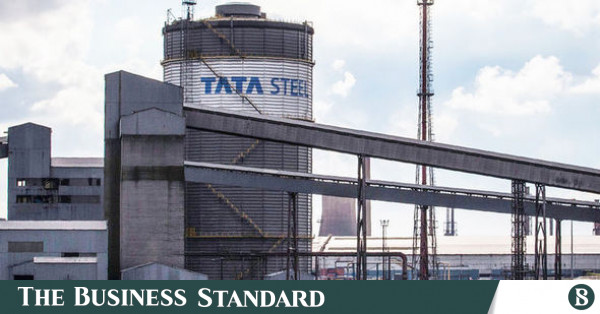
www.tbsnews.net




